Inside The New York Botanical Garden
From the Library
Posted in From the Library on March 23 2018, by Samantha D’Acunto
Samantha D’Acunto is the Reference Librarian at The New York Botanical Garden‘s LuEsther T. Mertz Library.
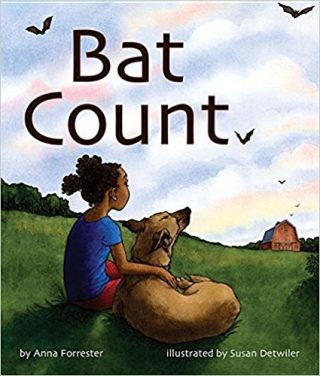 New titles from Arbordale Publishing have joined the children’s collection in the LuEsther T. Mertz Library! The titles featured below offer a perfect balance of education and entertainment with colorful illustrations, engaging storylines, and learning activities. All new titles are available for check out for library cardholders.
New titles from Arbordale Publishing have joined the children’s collection in the LuEsther T. Mertz Library! The titles featured below offer a perfect balance of education and entertainment with colorful illustrations, engaging storylines, and learning activities. All new titles are available for check out for library cardholders.
Bat Count: A Citizen Science Story by Anna Forrester / Illustrated by Susan Detwiler
Jojo and her family have always welcomed bats into their barn. It was not until a newspaper published a story about a disease that effected bats called white-nose syndrome that Jojo and her family decide to become citizen scientists and conduct a bat count. Throughout the years, they have noticed a drop in the number of bats they spot flying around their barn. Bat Count: A Citizen Science Story invites readers for an evening bat count with Jojo and her family. Read about bat facts, white-nose syndrome, and how to become a citizen scientist in the additional pages toward the end of the story! Bat Count is one of the selections for the National Science Teachers Association 2018 Outstanding Science Trade Books, as it is a wonderful way to encourage middle grade readers to explore and engage in science for fun.
If you do not have the opportunity to observe bats near your home consider taking a bat walk! Last autumn, staff at the NYBG Everett Children’s Adventure Garden hosted bat walks in collaboration with the Organization for Bat Conservation. Join us at future events! In the meantime, check your local bat or wildlife organization to find bat walks in your area.
Read More
Posted in From the Library on March 9 2018, by Samantha D’Acunto
Samantha D’Acunto is the Reference Librarian at The New York Botanical Garden‘s LuEsther T. Mertz Library.
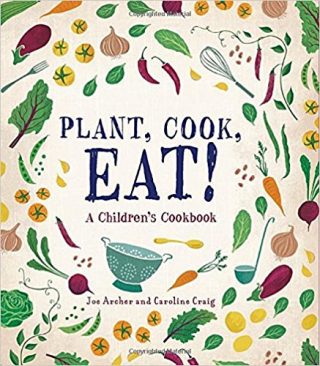 Winter is ending and warmer days are ahead of us. It’s time to spring out of your winter reading habits and practice being an active reader! The titles below from Charlesbridge publishing will inspire you to get up and get out with a book in hand.
Winter is ending and warmer days are ahead of us. It’s time to spring out of your winter reading habits and practice being an active reader! The titles below from Charlesbridge publishing will inspire you to get up and get out with a book in hand.
With all the excitement going around about the opening of the Edible Academy, the LuEsther T. Mertz Library was very happy to receive a first look at Plant, Cook, Eat! by Joe Archer and Caroline Craig. Expect to see this book hit the shelves this month!
For all aspiring young chefs, Plant, Cook, Eat! is a wonderful invitation to explore the farm-to-table movement in a DIY fashion. Authors Joe Archer and Caroline Craig set readers up for success! Sections cover everything from seeds to harvest. Learn about composting, necessary tools to have handy, garden maintenance, including pest and daily chores, and finally harvesting your vegetables for meals. Additional growing information is provided about select vegetables such as carrots, lettuce, tomatoes, and more. Plant, Cook, Eat! offers guidance for growing vegetables in all spaces—whether you are growing indoors or outdoors, in a backyard or in a container, you will have the information and confidence you need to yield results.
Read More
Posted in From the Library on February 1 2018, by Esther Jackson
Esther Jackson is the Public Services Librarian at NYBG’s LuEsther T. Mertz Library where she manages Reference and Circulation services and oversees the Plant Information Office. She spends much of her time assisting researchers, providing instruction related to library resources, and collaborating with NYBG staff on various projects related to Garden initiatives and events.
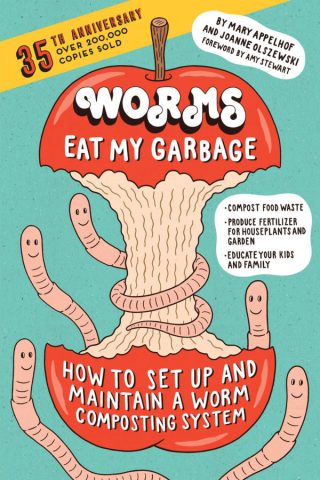 Worms Eat My Garbage: How to Set Up and Maintain a Worm Composting System is a classic book about home composting written more than 35 years ago and now in its third edition. For this new edition, author Joanne Olszewski remains true to the style of the original author Mary Appelhof, but adds new scientific data and contemporary research about vermicomposting—or composting with worms.
Worms Eat My Garbage: How to Set Up and Maintain a Worm Composting System is a classic book about home composting written more than 35 years ago and now in its third edition. For this new edition, author Joanne Olszewski remains true to the style of the original author Mary Appelhof, but adds new scientific data and contemporary research about vermicomposting—or composting with worms.
Worms Eat My Garbage is an informative book that includes the most practical, accessible information about how to set up and care for a home worm bin. At just under 200 pages and written in the first person, it’s a friendly yet powerful reference resource for those who are thinking about starting a worm bin, trying to figure out how best to care for an existing bin, or just want to learn more about the practice of vermicomposting. Because the book is written in simple language and contains many helpful diagrams it is accessible to children and adults, and would also be very valuable for teachers.
Read More
Posted in From the Library on January 18 2018, by Esther Jackson
Esther Jackson is the Public Services Librarian at NYBG’s LuEsther T. Mertz Library where she manages Reference and Circulation services and oversees the Plant Information Office. She spends much of her time assisting researchers, providing instruction related to library resources, and collaborating with NYBG staff on various projects related to Garden initiatives and events.
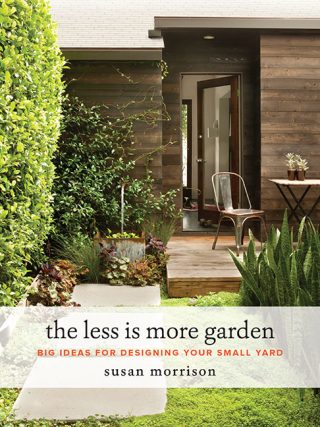 The Less is More Garden: Big Ideas for Designing Your Small Yard by Susan Morrison for Timber Press delivers what it promises—big ideas!
The Less is More Garden: Big Ideas for Designing Your Small Yard by Susan Morrison for Timber Press delivers what it promises—big ideas!
Very few of us have the perfect backyard or garden. In fact, most people who have outdoor spaces to garden are probably “tormented” to various extents by peculiarities of their yards. If part of the problem is related to space—too little of it, say, or an oddly-shaped plot—Morrison’s designs might be just what you need to find a solution.
Morrison’s designs are, as Steve Aitken notes in his foreword, enviable. They are tasteful, practical, and beautiful. How does she accomplish these spaces? Although site analysis is a crucial part of garden design, Morrison starts with three simple questions. What will you be doing in the garden? When will you be outside? Who will be with you? With user experience in mind, Morrison crafts spaces readers can easily imagine themselves entering.
For readers new to garden design, Morrison mostly offers inspiration. More experienced designers will be able to learn from Morrison’s designs and gain practical ideas about how to use space—not just small or oddly-shaped areas but all shapes and sizes—to best effect in a garden.
In design, constraints such as limited space often inspire creative solutions and great ideas. Morrison’s work is evidence of this premise, although I suspect she would shine in any setting.
Posted in From the Library on January 11 2018, by Esther Jackson
Esther Jackson is the Public Services Librarian at NYBG’s LuEsther T. Mertz Library where she manages Reference and Circulation services and oversees the Plant Information Office. She spends much of her time assisting researchers, providing instruction related to library resources, and collaborating with NYBG staff on various projects related to Garden initiatives and events.
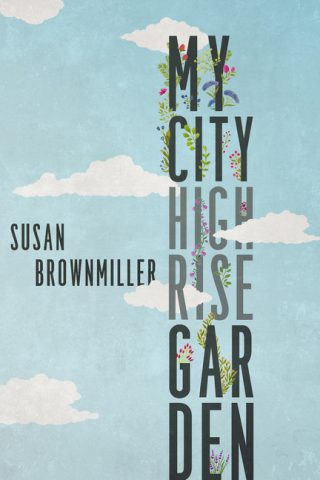 My City Highrise Garden by Susan Brownmiller is a slim, attractive volume—a gardening book that is part memoir and part advice, very firmly set in New York City. Her highrise garden is located on the top floor of a Greenwich Village apartment building, and, chapter by chapter, readers learn about the history of the garden space and Brownmiller’s experiences as a gardener.
My City Highrise Garden by Susan Brownmiller is a slim, attractive volume—a gardening book that is part memoir and part advice, very firmly set in New York City. Her highrise garden is located on the top floor of a Greenwich Village apartment building, and, chapter by chapter, readers learn about the history of the garden space and Brownmiller’s experiences as a gardener.
There is a certain brutality and unpredictability to rooftop or balcony gardening as gardeners work within a very small area and are subject to different hazards, such as high winds and the threat that their plants will drop leaves, fruit, or even full plants to the balconies and street below. Some such challenges are detailed by Brownmiller, such as when she had to remove her 20-year-old birches to renovate the garden space, or when downstairs neighbors complained about peaches falling onto their balconies. In spite of these challenges, or maybe, in part, because of them, Brownmiller’s love for her garden overlooking the Hudson is infectious.
For those who enjoy garden journals, My City Highrise Garden is an wonderful journey and escape. For those who want to learn more about balcony gardening, check out the new balcony gardening guide from the NYBG Plant Information Office.
Posted in From the Library on January 11 2018, by Samantha D’Acunto
Samantha D’Acunto is the Reference Librarian at The New York Botanical Garden‘s LuEsther T. Mertz Library.
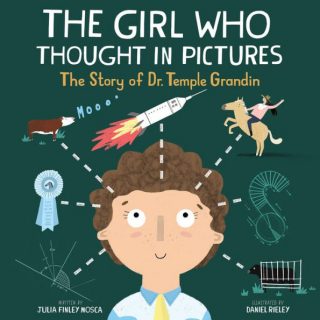 As we embark on 2018, consider revising your reading lists to incorporate these new and exciting titles from the circulating Children’s collection at the LuEsther T. Mertz Library! The National Science Teachers Association recently listed two of the titles in this post on Outstanding Science Trade Books 2018. The library will continue to feature more titles from this list in future posts.
As we embark on 2018, consider revising your reading lists to incorporate these new and exciting titles from the circulating Children’s collection at the LuEsther T. Mertz Library! The National Science Teachers Association recently listed two of the titles in this post on Outstanding Science Trade Books 2018. The library will continue to feature more titles from this list in future posts.
Innovation Press celebrates innovative authors and illustrators, and the Library has welcomed three of their new titles into our collection. Kicking off this post is The Girl Who Thought in Pictures: The Story of Dr. Temple Grandin by Julia Finley Mosca, which introduces extraordinary visual thinker Dr. Temple Grandin, who harnessed her autism to visualize modern farming techniques that have been implemented by farms across the globe. This book has received high praise from both critics and readers! The illustrations by Daniel Rieley help readers see what Dr. Grandin was thinking. The combination of text and detailed visuals will excite readers of all needs, and Dr. Temple Grandin is an inspiration to innovators of all ages.
Read More
Posted in From the Library on January 5 2018, by Esther Jackson
Esther Jackson is the Public Services Librarian at NYBG’s LuEsther T. Mertz Library where she manages Reference and Circulation services and oversees the Plant Information Office. She spends much of her time assisting researchers, providing instruction related to library resources, and collaborating with NYBG staff on various projects related to Garden initiatives and events.
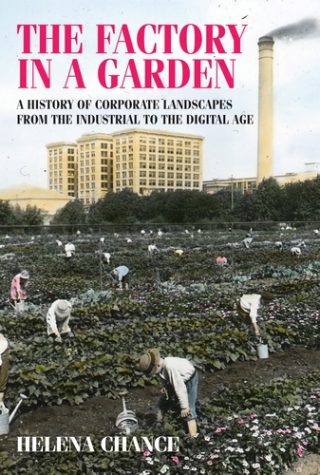 The Factory in a Garden: A History of Corporate Landscapes from the Industrial Age to the Digital Age by Helena Chance is a detailed history of gardens and greenspace in corporate culture, from real landscapes to suggested bucolic scenes used to seduce would-be employees and home consumers alike.
The Factory in a Garden: A History of Corporate Landscapes from the Industrial Age to the Digital Age by Helena Chance is a detailed history of gardens and greenspace in corporate culture, from real landscapes to suggested bucolic scenes used to seduce would-be employees and home consumers alike.
Chance’s book treats gardens and landscapes as designed artifacts and explores the ideologies and values that shaped their design. Chance also assesses the depiction and mediation of these spaces in photographs, illustrations, film, and text.
The Factory in a Garden is a theory-heavy book that includes information about labor history, industrialization, and, of course, garden design in Great Britain and the United States. Chapter one addresses the origin of the factory garden movement, from the early Industrial Revolution to the period between WWI and WWII. Chapter two details links between corporate landscapes and social and health reform, including urban planning and public greenspaces during the late 19th and early 20th centuries.
Read More
Posted in From the Library on December 28 2017, by Esther Jackson
Esther Jackson is the Public Services Librarian at NYBG’s LuEsther T. Mertz Library where she manages Reference and Circulation services and oversees the Plant Information Office. She spends much of her time assisting researchers, providing instruction related to library resources, and collaborating with NYBG staff on various projects related to Garden initiatives and events.
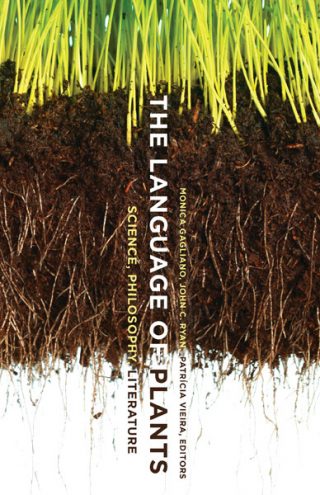 The Language of Plants: Science, Philosophy, Literature is a collection of essays edited by Monica Gaglioano, John C. Ryan, and Patricia Vieira published by the University of Minnesota Press.
The Language of Plants: Science, Philosophy, Literature is a collection of essays edited by Monica Gaglioano, John C. Ryan, and Patricia Vieira published by the University of Minnesota Press.
On her website, Gaglioano writes, “This book commences a dialogue between philosophy, science, literature, and cinema dealing with plants. The aim of the edited collection is to develop a better understanding of plant life through critical awareness, conceptual rigor, and interdisciplinary thinking.” Indeed, the essays in The Language of Plants run the gamut between more scientific essays about volatile organic compounds produced by plants as a self-defense mechanism, to more humanities- and theory-based essays on the language of flowers in art and literature.
As a whole, the collection is eclectic and thoughtful; readers of different backgrounds may be drawn to different essays, and the collection offers room for exploration between disciplines and paradigms both. For those interested in the topic of plant intelligence, The Language of Plants deserves a look.
For those based locally, the NYBG Humanities Institute (part of the LuEsther T. Mertz Library) will be hosting a symposium on Plant Intelligence on March 22, 2018, with speakers Peter Wohleben (author of The Hidden Life of Trees) and Stefano Mancuso (author of Plant Revolution). See the upcoming NYBG Adult Education Spring-Summer course catalog for more information.
Posted in From the Library on December 26 2017, by Samantha D’Acunto
Samantha D’Acunto is the Reference Librarian at The New York Botanical Garden‘s LuEsther T. Mertz Library.
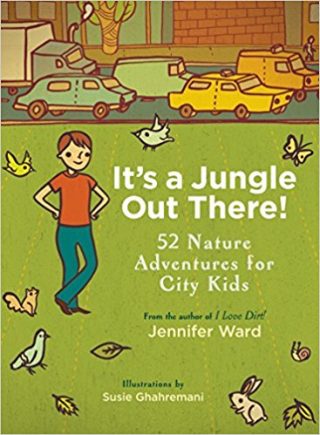 Living in a city can pose various challenges for families who are looking for educational opportunities that balance city and nature. When most of our day is spent commuting shoulder to shoulder in a vastly overpopulated city, who has time to create well-balanced activities that invite exploration and nurture education? The LuEsther T. Mertz Library is here to help. Below you will find our new favorite titles for the entire family from Roost Books, exploring nature and environmental awareness in cities!
Living in a city can pose various challenges for families who are looking for educational opportunities that balance city and nature. When most of our day is spent commuting shoulder to shoulder in a vastly overpopulated city, who has time to create well-balanced activities that invite exploration and nurture education? The LuEsther T. Mertz Library is here to help. Below you will find our new favorite titles for the entire family from Roost Books, exploring nature and environmental awareness in cities!
It’s a Jungle Out There! 52 nature Adventure for City Kids by Jennifer Ward invites parents and children to explore the nature behind and below all the traffic and the noise. The 52 fun and educational activities listed in the book are conveniently categorized by season. Ward makes it easy for families to hunt for worms in the spring, observe colonies of sidewalk ants during the summer, identify trees by their bark in the fall, and locate birds’ nests in the winter. There are even indoor activities to enjoy during inclement weather! Invite your child to a window and spend time observing what you see from it, or plant something together indoors. At the end of each activity, Ward provides an explanation of the lessons being taught during the activity. Sprinkled throughout the book are Plant the Seed prompts which encourage additional reading or actions that will enhance the activity’s lesson. The narrative throughout the book assumes an adult reader is the target audience but the context is simply written so that a reader of any age can enjoy Ward’s book. The book itself is thin and compact, making it easy to bring along as you discover parts of your city.
Read More
Posted in From the Library on December 21 2017, by Esther Jackson
Esther Jackson is the Public Services Librarian at NYBG’s LuEsther T. Mertz Library where she manages Reference and Circulation services and oversees the Plant Information Office. She spends much of her time assisting researchers, providing instruction related to library resources, and collaborating with NYBG staff on various projects related to Garden initiatives and events.
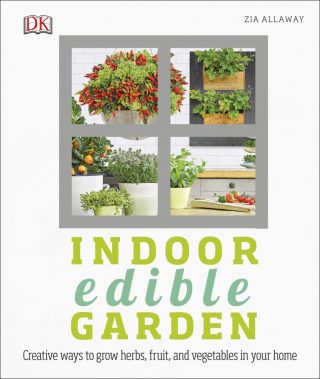 Books from the publisher DK are some of my favorite reference resources. Their pictorial components, overall design, and wealth of information are truly a delight. When I learned about a new DK book by Zia Allaway, Indoor Edible Garden: Creative Ways to Grow Herbs, Fruit, and Vegetables in Your Home, I was very excited to check it out.
Books from the publisher DK are some of my favorite reference resources. Their pictorial components, overall design, and wealth of information are truly a delight. When I learned about a new DK book by Zia Allaway, Indoor Edible Garden: Creative Ways to Grow Herbs, Fruit, and Vegetables in Your Home, I was very excited to check it out.
If you are only going to buy one book about indoor gardening this year, make it Indoor Edible Garden. This resource is packed full of helpful information, detailed diagrams, and creative indoor gardening projects. This book instills confidence and knowledge in beginners and inspires creativity and experimentation in the more experienced.
The book is divided into six sections: planning an indoor edible garden; herbs and edible flowers; sprouts, leaves, and roots; fruiting vegetables; fruit; and experts’ tips. One of my favorite parts of the book comes early on—a series of helpful diagrams indicating “zones” indoors where gardeners can grow vegetables based on light and temperature restrictions and requirements. One of the most challenging aspects of indoor gardening is light, and Indoor Edible Garden is a great resource for information about this crucial component.
Within each section, projects range from simple to more complex, with the requirements for each project including supplies, time to set up the project, and ongoing maintenance of plantings clearly indicated. One of my favorites is the suggestion to grow microgreens in silicone muffin cups (pp. 84–87). This project, like so many in this book, is creative, relatively simple, and clearly communicates to home gardeners what is needed for indoor garden success.
Whether you are looking for a book for yourself, or a last-minute holiday gift for someone special, Indoor Edible Garden is sure to delight and inspire.
 New titles from Arbordale Publishing have joined the children’s collection in the LuEsther T. Mertz Library! The titles featured below offer a perfect balance of education and entertainment with colorful illustrations, engaging storylines, and learning activities. All new titles are available for check out for library cardholders.
New titles from Arbordale Publishing have joined the children’s collection in the LuEsther T. Mertz Library! The titles featured below offer a perfect balance of education and entertainment with colorful illustrations, engaging storylines, and learning activities. All new titles are available for check out for library cardholders.








